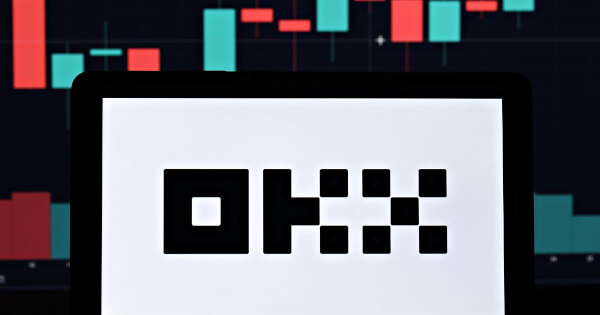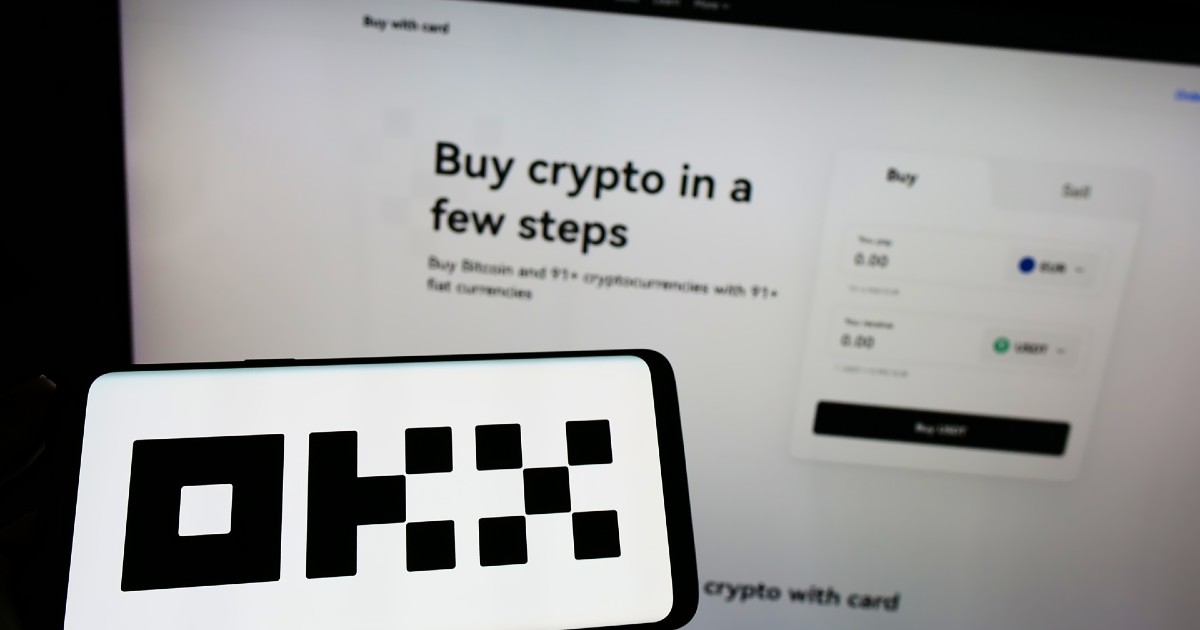In this week’s crypto highlights, we explore the price movements of BTC, WIF, LTC, and MNT. Additionally, this recap includes other notable industry news items that occurred over the last seven days. Without further ado, let’s dive into the latest market developments.
Market spotlight: Memecoins have recorded over 1,300% in returns so far in 2024
Memecoins have become one of the most influential narratives in the crypto industry:
- According to CoinGecko, memecoins have been the most profitable sector in the crypto industry in 2024 so far, outpacing the next closest industry segment by almost five times. Among the top 10 best-performing altcoins, three of them are less than a month old.
- Memecoins helped Solana flip Ethereum in terms of trading activity on decentralized exchanges. Solana’s blockchain actually faced transaction processing troubles due to the local memecoin frenzy.&
- Memecoins are considered one of the major drivers of increased user activity on Ethereum’s layer 2 (L2) network, Base.
- L1 and L2 networks, including Avalanche, Arbitrum, and BNB, explored creating memecoin funds to push network adoption.
Does all this mean the market entered an altcoin season? Most likely, no. Back in 2021, one crypto enthusiast described the path to the altseason in the following way.
According to this path, the memecoin frenzy is considered a part of the altcoin season. However, some indicators suggest that the crypto market could be still in phase 1, which is considered the longest:
- Bitcoin dominance remained relatively strong over the last six months, sustaining above 50%.
- Bitcoin has been predominantly outperforming Ethereum so far in 2024.
- Only a few other sectors showed better performance than Bitcoin in 2024, including memecoins, real-world assets (RWA), DeFi, and AI. Large caps were behind Bitcoin for the most part.
Nevertheless, this cycle still appears to be different, arguably due to spot Bitcoin ETFs. Their anticipation, and then rapid adoption, were some of the major contributors that elevated Bitcoin’s price to a new all-time high ahead of the coming halving. This happened for the first time in Bitcoin’s history.
The recent memecoin frenzy also hints that this cycle could be “weird” compared to previous ones. Some consider memecoin mania a Trojan horse, which could introduce crypto to a wider audience, but perhaps boost the speculative vision of the industry. The latter could potentially make the potential bull run of altcoins shorter and faster in this cycle, compared to previous ones.
Other noteworthy market events
L3 narrative saw a boost following the Degen Chain launch
Memecoins fans also recently found a new frontier to explore — layer 3 (L3) networks.
On March 28, crypto infrastructure provider Syndicate launched Degen Chain, which serves as a specialized ultra-low-cost network to perform transactions using the DEGEN token. The latter is currently considered a community token among Farcaster users. Farcaster is running on Ethereum’s L2 Base, therefore making Degen Chain an L3 network.&
A few things to know about Degen Chain:
- It rapidly gained popularity, attracting over 130,000 addresses, and more than $50 million in total value locked (TVL), within a few days post-launch.&
- The DEGEN token price has more than quadrupled in just four days, as it is used as a native gas token within the network.&
- This L3 network was flooded with memecoins, which saw over $40 million in daily trading volume.
This rapid adoption propelled Degen Chain into the limelight as one of the pioneering L3 chains, sparking discussions regarding the feasibility and potential of such networks.
The general idea behind an L3 network is to have a blockchain that can quickly and reliably execute a specific array of tasks. Advocates cite advantages such as the low cost of native bridging, custom gas tokens, and specialized state transition functions (although these features can be achieved using L2s as well).
Nevertheless, dissenting voices, including Polygon Labs CEO Marc Boiron, argue against the necessity of L3 networks. Boiron claimed that L3s are not required for scalability, and that they primarily serve to divert value away from Ethereum onto the L2 networks. Some echoed his sentiments, calling L3s “centralized servers settling on other centralized servers (L2s),” and drawing parallels to Web2, but with higher fees and substandard user experiences.
In any case, the L3 sector is still nascent. Key players in this ecosystem include Orbs, Xai, zkSync Hyperchains, and the recently introduced Degen Chain.
SingularityNet, Fetch.ai and Ocean Protocol plan to create an AI alliance and merge their tokens
Artificial Superintelligence Alliance. It sounds like the name of a faction from a video game with Terminator’s Skynet vibes. However, this might also become one of the largest AI-related events in the crypto industry.
SingularityNet, Fetch.ai, and Ocean Protocol, three prominent AI protocols collectively valued at around $7.5 billion, decided to merge through a community vote. If the merger is approved, it will result in the creation of the Artificial Superintelligence Alliance and the ASI token, which will replace SingularityNet’s AGIX token, Fetch.ai’s FET token, and Ocean Protocol’s OCEAN token.
Each project will bring unique attributes to the potential alliance. Fetch.ai contributes its autonomous AI agents, Ocean Protocol offers its data sharing and monetization capabilities, while SingularityNET brings its R&D expertise in AI integration.
The alliance will be led by the SingularityNet CEO, Ben Goertzel, while the Fetch.ai network will be a bastion for the ASI token. The latter will essentially be a rebranded FET token, which will be swapped to ASI at a 1:1 ratio. AGIX and OCEAN are set to be converted at a 1:0.43 ratio.
On April 2, a governance proposal became available to FET and AGIX token stakers. It will remain open until April 7 for FET holders, and April 16 for the AGIX community. OCEAN token holders will not participate in the vote, since they relinquished control of the token following the minting of the max supply.
Ethereum BLOBs are now used to create inscriptions
It’s quite ironic when a feature developed to fix a certain issue becomes a trigger of the same problem. Something similar recently happened within the Ethereum ecosystem.
On March 13, Ethereum developers rolled out the Dencun upgrade, which introduced so-called BLOBs to make Layer 2 (L2) transactions cheaper. Shortly after their launch, L2 fees significantly dropped. However, developers also saw another potential in BLOBs: an opportunity to create inscriptions, much like Bitcoin Ordinals.
BLOB-based inscriptions rapidly began to stress-test the feature, recently causing a spike in fees in certain L2 networks. On March 27, Base fees temporarily reached $300, amid the inscriptions flood. According to the Dune dashboard, inscriptions now account for the largest portion of BLOB transactions in total, nearly 40%.
Notably, inscription hype emerged despite BLOBs being “ephemeral,” as they will be removed from the network after 18 days (although some nodes can still maintain their data). The increased interest and usage caused BLOBs to operate at full capacity, with a 100% utilization rate.
One sentence news
- Former FTX CEO Sam Bankman-Fried was sentenced to 25 years in prison.
- Ethena Labs commenced an airdrop, distributing $450 million worth of ENA tokens among eligible wallets.
- Bitwise filed for a spot Ether ETF with the U.S. Securities and Exchange Commission (SEC).
- U.S. District Judge Katherine Failla allowed the SEC to pursue its lawsuit against Coinbase, but dismissed the regulator’s claim that the crypto exchange acted as an unregistered broker when offering its Wallet application.
- Ethereum co-founder Vitalik Buterin shared the next steps for protocol simplification, known as the Purge.
- Google now allows users to search wallet balances on Bitcoin, Arbitrum, Avalanche, Optimism, Polygon, and Fantom blockchains.
Notable price performances
Bitcoin reestablished its price correction
Bitcoin registered its seventh green month in a row for the first time in a decade, showing a 16% monthly price increase in March. However, the BTC price failed several times to break $71,500, with price performance resembling a triple top pattern. In addition, the U.S. dollar index hit 105 for the first time in four months, while stronger-than-expected U.S. manufacturing data was reported. As a result, Bitcoin welcomed April with a correction below $66,000.
The asset price moved below the 20-day EMA with increased volume, and reached the 0.236 Fibonacci point, indicating the bears might have an upper hand. The RSI reached the midpoint on a daily chart, but approached an oversold level on lower timeframes, suggesting that there could be a slight price rebound in the coming days.&
WIF became the third-largest memecoin
Dogwifhat (WIF) maintains its status as the best-performing asset among the top 100 digital assets by market cap, showing more than 2,400% year-to-date growth. This week, the WIF price also joined top gainers, which helped the asset to surpass Pepe (PEPE) and become the third-largest memecoin.&
The largest WIF whale, with an unrealized profit of over $130 million, continues holding the asset, while some prominent figures in crypto claim that the memecoin might reach $10, fueling the fear of missing out (FOMO) within the WIF community.
However, the asset formed a bearish divergence on a daily chart, while MACD experienced a zero cross on a four-hour timeframe. This suggests that bullish momentum may be fading, and a deeper price correction might follow.
LTC price jumped amid its recognition as a commodity
In a recent legal action against KuCoin, the U.S. Commodity Futures Trading Commission (CFTC) declared Litecoin a commodity. Following this event, the LTC price experienced& double-digit upward movement in a day, and reclaimed a psychological level of $100.
However, the LTC and BTC correlation then began to decrease, which has historically led to the altcoin’s price drop. MACD formed a bearish divergence on a daily chart, and is on the verge of a bearish crossover. If the price moves below the 20-day EMA, the 50-day SMA could act as the next potential target.&
MNT price reached a new all-time high
On March 27, the MNT price set a new all-time high, approaching $1.50. The catalyst behind this move is considered to be the launch of Mantle’s reward station, which empowers MNT holders to lock their tokens in a vault to accumulate rewards.
Following this move, the asset price experienced a consolidation in the $1.16-$1.34 range. Further price movement could depend on which of these levels the asset price breaks first. If the $1.34 resistance level is broken, bulls could try to retest the all-time high. If MNT moves below $1.16, it could open the road to the middle of the Bollinger channel on a daily chart.
Tune in next week, and every week, for the latest CEX.IO crypto highlights. For more information, head over to the Exchange to check current prices, or stop by CEX.IO University to continue expanding your crypto knowledge.
Disclaimer: For information purposes only. Not investment or financial advice. Seek professional advice. Digital assets involve risk. Do your own research.

You can get bonuses upto $100 FREE BONUS when you:
💰 Install these recommended apps:
💲 SocialGood - 100% Crypto Back on Everyday Shopping
💲 xPortal - The DeFi For The Next Billion
💲 CryptoTab Browser - Lightweight, fast, and ready to mine!
💰 Register on these recommended exchanges:
🟡 Binance🟡 Bitfinex🟡 Bitmart🟡 Bittrex🟡 Bitget
🟡 CoinEx🟡 Crypto.com🟡 Gate.io🟡 Huobi🟡 Kucoin.









Comments